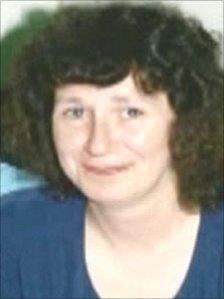Valleys Legionnaires' outbreak had 'number of sources'
- Published
A fatal outbreak of Legionnaires' disease in the south Wales valleys may have been caused by "very unusual climatic conditions," officials say.
An 85-year-old man and a woman of 49 died, and 22 people needed hospital treatment after the 2010 outbreak.
No single source was identified for cases in the Cynon Valley, Merthyr Tydfil and Rhymney Valley areas.
Dr Gwen Lowe, of Public Health Wales, said European research backed what began as a "purely speculative theory".
An investigation in to the outbreak found four cooling towers tested positive for the legionella bacterium but no single source was identified.
The Public Health Wales' Outbreak Control Team report found some cases were linked to commercial and retail premises outside the affected areas, while an unregistered cooling tower in Merthyr Tydfil which came under suspicion tested negative.
The outbreak, which became known as the Heads of the Valleys outbreak, began on 3 September 2010 and went on until 12 October.
It centred on a corridor 12km (7.5 miles) either side of the Heads of the Valleys road between Abergavenny in Monmouthshire and Llandarcy in Neath Port Talbot.
A number of people living and working in that area reported flu-like symptoms, in some cases chest pain and vomiting, with the symptoms worsening over the course of a week

Bev Morgan's death was directly linked to the outbreak
Mother-of-two Bev Morgan, 49, from Rhymney in Caerphilly county, became one of two cases linked to the outbreak when she died in hospital on 12 September.
An 85 year old man's death was also linked.
Ten further people with the disease were investigated but their cases were not found to be linked.
Two of these patients - a 70-year-old man and a 64-year-old woman - died.
The outbreak control team included representatives from eight local authorities, two local health boards, the Health and Safety Executive and Environment Agency Wales.
At the time Public Health Wales described it as a very complex outbreak. Their report said it was extremely complex to investigate.
More than 200 workplaces and other sites were sampled for the legionella bacterium.
The 58-page report called for more guidance on taking samples and collaboration between organisations tackling any future outbreak.
It said unregistered cooling towers "remain a problem in outbreaks" and called for councils to maintain their registers of these building.
Dr Lowe said only one case out of the 22 could be linked in microbiological terms to a specific source.
'Warm, humid'
She told Radio Wales that the theory about weather conditions might go some way to explaining the unusually high number of cases in a specific area.
The climatic conditions at the time may have caused an overgrowth of bacteria in the area, infecting more and more people, she said.
More weight had been given to it in light of research from the Netherlands which showed that a spike in the number of cases can occur under certain climatic conditions, she said.
In 2008, a study by the UK Health Protection Agency found that there appeared to be an increase in cases of Legionnaires' disease following warm, humid periods.
- Published21 September 2010
- Published20 September 2010
- Published18 September 2010